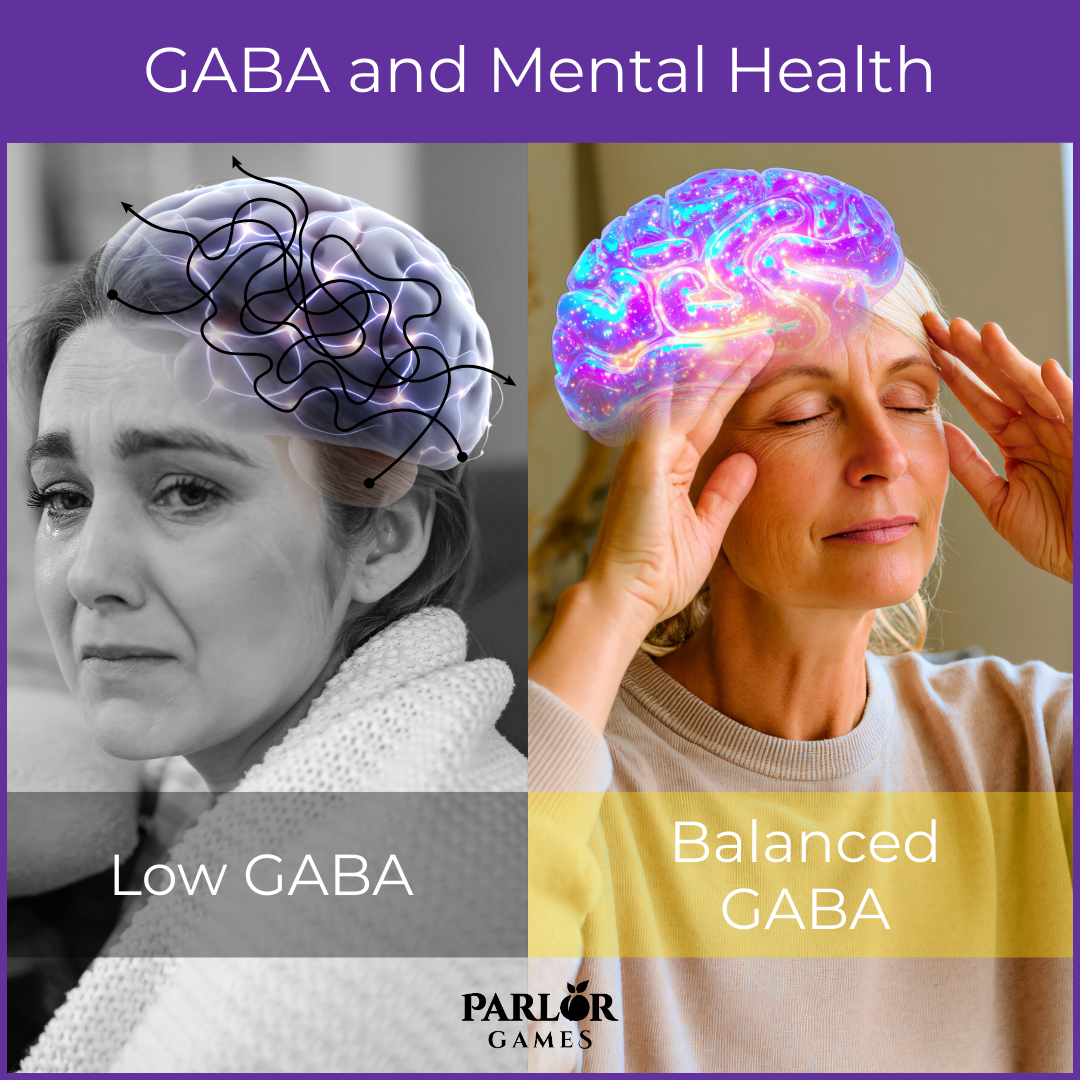CLICK TO SHOP OUR BLACK FRIDAY SALE!
*Excludes BioNude and subscriptions

The authors conducted a review of existing studies on how the GABA system (the brain’s main inhibitory neurotransmitter system) is involved in depression. They also examined research on medications and compounds that act on GABA receptors to understand whether these could serve as effective antidepressant treatments.
Their goal was to clarify two things:
Across many types of studies—brain imaging, spinal fluid measurements, and post-mortem analysis—people with major depressive disorder frequently show:
This suggests the brain may lose some of its natural inhibitory “calming” ability during depression.
The authors highlight that GABA is not isolated. GABA changes affect, and are affected by:
This reinforces the idea that depression is a multi-system condition, not just a problem with one chemical. It also suggests that GABA has a much more significant role in helping regulate other areas i.e., your happy hormones like serotonin, that can become dysregulated due to mental health challenges.
There is evidence that SSRIs and other traditional antidepressants can increase GABA levels or improve GABA receptor function over time. This suggests part of their therapeutic effect may involve restoring inhibitory balance in the brain. However, most standard antidepressants indirectly influence the GABA system, but they do so slowly and often inconsistently. They also come with a wide range of potential side effects (such as weight changes, sexual dysfunction, sleep disruption, and emotional blunting) which leads many people to seek gentler, more targeted options.
A major emphasis of the review is on neuroactive steroids that enhance GABA-A receptors. These include:
These compounds act quickly and directly on GABA-A receptors, and early studies show rapid improvements in mood, anxiety, and sleep disruptions. The authors view these treatments as strong support for GABA’s role in depression and a potential path for future antidepressant development.
Some studies suggest a possible indirect or limited central effect, while others find no clear penetration at all. What is well-supported is that GABA can act locally on GABA receptors in the skin, muscles, and peripheral nerves, producing calming and tension-reducing effects even without confirmed brain penetration. Topical GABA has been shown in several studies to reduce muscle tightness, calm peripheral nerve activity, and support relaxation through these local pathways. Because the body’s stress and sensory systems are interconnected, calming peripheral GABA receptors may provide a bottom-up calming effect, helping reduce physical tension and promoting a sense of relaxation - effects that align with the broader GABA-related mechanisms discussed in the review.

Lorem ipsum dolor sit amet, consectetur adipiscing elit.
Lorem ipsum dolor sit amet, consectetur adipiscing elit.
Lorem ipsum dolor sit amet, consectetur adipiscing elit.
Lorem ipsum dolor sit amet, consectetur adipiscing elit.
Disclaimer: The information provided above is intended for educational and informational purposes only. Statements made have not been evaluated by the FDA nor are they intended to treat or diagnose. Any health concerns should be discussed and evaluated by your primary health care provider.
Parlor Games, LLC ● kate@parlor-games.com ● 5304 River Rd N Ste B ● Keizer OR 97303
Disclaimer: The information provided above is intended for educational and informational purposes only. Statements made have not been evaluated by the FDA nor are they intended to treat or diagnose. Any health concerns should be discussed and evaluated by your primary health care provider.
28 Day Challenge Subscription Details

We ship you a 28 day supply of Silky Peach Cream for only $29 (more than 25% off our normal price) when you sign up for Subscribe & Save.
Follow the directions we include in the package and apply Silky Peach cream on your tender bits for 28 days.

Decision Day:
5 days before your subscription rebills, we’ll send you an email reminder with a link. If you decide Silky Peach is nice but not your thing… you can click that link and cancel your subscription without even talking to anyone. No hassle — no questions asked.
If you are like 72% of our Silky Peach customers, you’ll love it and can't imagine life without it. In that case, do nothing, and we’ll welcome you to the Parlor Games family and ship Silky Peach Cream to your door step every month for the same discounted price of $29 — locked in for as long as you remain a subscriber.

Important note about our easy-breezy subscriptions:
We know that some companies make it hard to cancel a subscription — that’s not us. Our mission is to save the world — one vagina at a time! If you decide you don’t need Estriol as an ongoing solution for dryness, incontinence, UTIs and keeping sex fun and comfortable again, we understand. Five days before we ship your next order, you'll receive an email with a link to cancel right there in the message.
No hunting, no searching, we got you. Respect is where it’s at.
FYI – Estriol is beneficial for skin integrity and mucous membranes. It’s great for vaginal atrophy and also amazing for use on the face and neck. Applying a small amount — about 1 pump — can help build the collagen and plump up the cells to reduce wrinkles. Who knew!!
OUR HAPPINESS GUARANTEE
We want you to feel safe and confident trying any of our products. That's why we promise 100% money-back guarantee on the purchase price of the first bottle of any of our products. Balancing hormones DOES take some time, so please try it for 28 days. If after 28 days you are unhappy, or the product just hasn't worked for you, simply contact us and we'll process a refund of your full purchase price upon receipt. Sorry, shipping fees are not refundable.